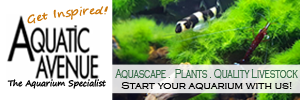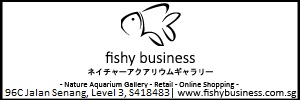
Originally Posted by
Urban Aquaria

Well, i guess viewers do have to watch that video based on the context of how Msjinkzd receives her livestock... she is an importer and distributor, so the majority of the livestock she receives are in bulk quantities from overseas and the bags have been in transit for many days at a stretch, therefore toxic levels in those bulk bags would have already accumulated to high levels, hence the "plop and drop" method is better as she wants to immediately get the livestock out of the dirty water and into clean water, its almost like an emergency procedure with no time to waste to reduce losses. In such cases, the benefit of immediate action to get livestock out of toxic conditions outweighs the stress in the livestock.
Importers/distributors usually put the livestock into holding tanks with neutral parameters too, so its much easier for the livestock be "plopped" into the moderate controlled tank conditions with less issues (they are not being dropped into high-tech planted tanks with vastly different parameters and Co2 injection). If i was an importer and also processing livestock quantity in the hundreds and thousands every week, i would also be doing it the same way too.
Many aquarists in the states also order livestock online which are delivered by postal service, so this method is also applicable for them too.
On the other-hand, in our local context when buying livestock from LFS, they are typically bagged in "clean" LFS water (hopefully) with ample oxygen and we will usually bring home them home within an hour (at most just a few hours). The water conditions in the bag would not have deteriorated so badly as if they were stuck in there for days, so there is still opportunity to do slower less-stressful acclimation process on the livestock to further maximize their survival rates.
Personally, how i acclimate my livestock depends alot on the LFS tank conditions vs my home tank conditions, if the conditions are very similar and the livestock are the hardy type, i also just "plop and drop" the livestock without any acclimation at all and there is no problems. I usually do that with hardy fishes like guppies, rasboras, boraras and tetras when introducing them into my quarantine tanks or even low-tech planted holding tanks, since their water parameters are pretty much almost the same across the board anyways.
But if the 2 tank conditions are very different.... for example, when shifting from a well oxygenated bare-bottom tank with pH 7.6 to a high-tech planted tank using ADA Amazonia aquasoil with pH 6.4 (dropping down to pH 5.6 during Co2 injection), then i will take more care to do a drip acclimation procedure to ease the transition process for the livestock. I notice when i do this the livestock are alot less stressed and any potential issues are greatly reduced.
This is even more important for shrimps as they take a much longer time to acclimate, especially when being transferred between different tanks, even the slightest differences can cause issues. Previously when i started in the hobby and didn't acclimate shrimps i notice much lower survival rates (even after picking the healthiest ones at the LFS), shrimps exhibiting delayed stress effects and dying consecutively over the course of days and weeks... but when i started to drip acclimate them properly the survival rates increased significantly to the point where i could usually see almost 100% of the shrimps still alive and active over the following weeks and months.
At this level of extra care and attention (aka kiasu style), i guess we are not looking to just reduce death rate percentages like importers or LFS (they have to constantly factor in and reduce livestock losses as part of their business), but we as home aquarists want to maximize survival rates to 100% (or at least as close to it as possible) for our livestock, so the extra time and effort to acclimate our livestock can help.











 Reply With Quote
Reply With Quote















Bookmarks